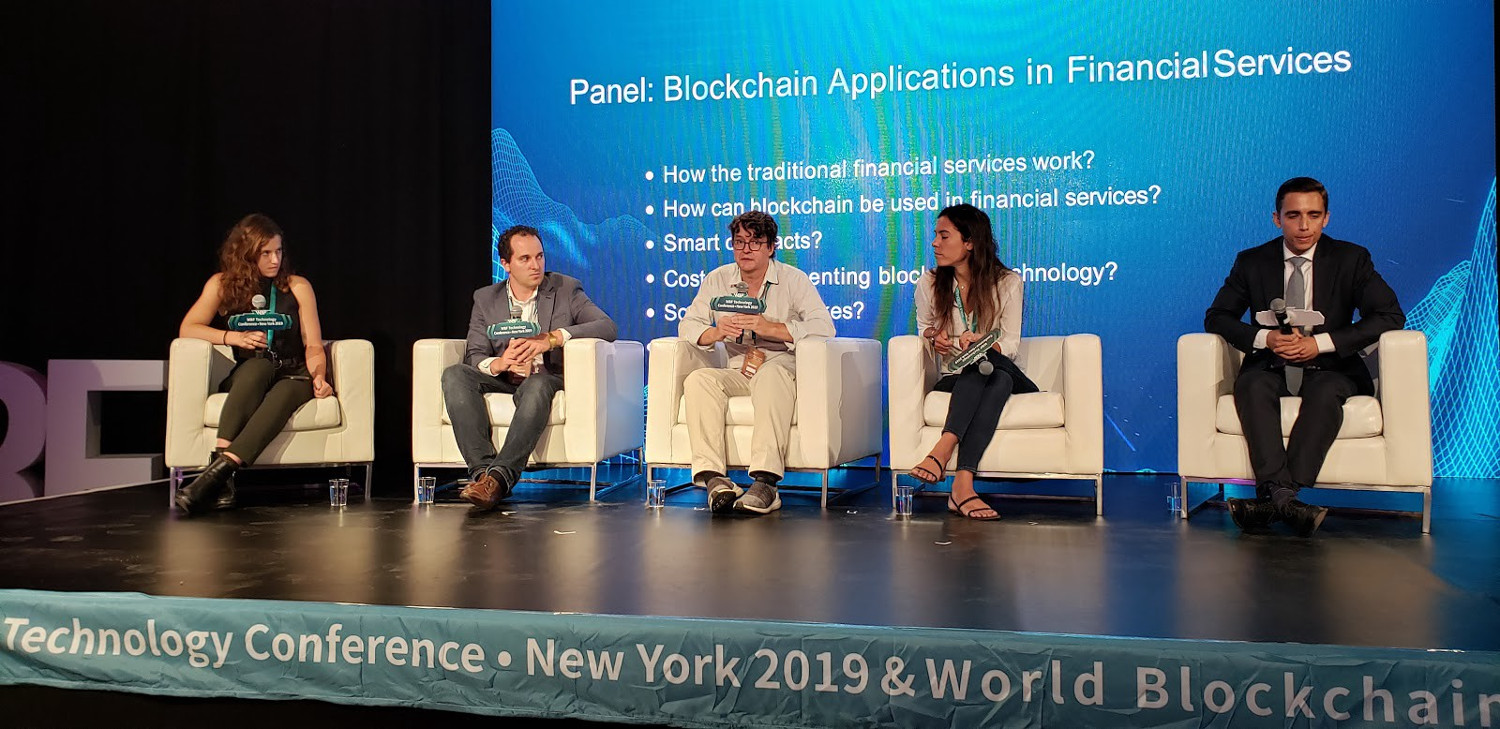J.P. Morgan DLT Spinoff Kadena Launches First Hybrid Blockchain
- Called the “industry’s first hybrid blockchain platform”, Kadena allows for the connection of a public chain with a private network.
- In order to support interoperability Kadena uses its own smart contract programming language called Pact.
Kadena founder Stuart Popejoy speaking at the World Blockchain Forum. Kadena
The first blockchain tech company to come out of J.P. Morgan’s Blockchain Center for Excellence, Kadena, has fully launched its public blockchain, the firm announced in a press release on 15 January.
What Kadena calls the “industry’s first hybrid blockchain platform” is an effort by the company to develop a scalable, secure proof-of-work alternative to the current leading cryptocurrencies, namely Bitcoin and Ethereum.
The newly launched blockchain, according to the company, is the first sharded Proof-of-Work Layer 1 network to make it to market, which also includes full transactions and the ability to write smart contracts.
Through Kadena, businesses and individuals can get access to apps and projects, which maintain privacy features to address any regulatory concerns, while at the same time use a fully-scalable base layer as a piece of public infrastructure. This hybrid blockchain allows for the connection of a public chain with a private network.
Stuart Popejoy, the founder and president of Kadena, said:
“Despite blockchain having immense potential, our experience building JP Morgan’s first blockchain showed us its limitations. Launching a fully functional hybrid blockchain which seamlessly integrates a public chain with a private network is a significant step forward in reimagining what applications can do on-chain.”
Kadena uses its open-source smart contract programming language, called Pact, in order to support the interoperability of its hybrid blockchain. The company also stated that the value of PoW’s has been proven through the durability of Bitcoin and Ethereum, though where they fail is in their inability to reliably process transactions and increase the demand for decentralized apps.
The firm’s CEO and co-founder, Will Martino, said:
“We’ve solved the scaling challenges of Bitcoin with parallel Proof of Work chains while addressing the security issues of Ethereum with Pact. Today’s launch of our public blockchain with smart contract transactions, which completes our hybrid platform, advances mainstream adoption. We’re excited to see how Kadena’s blockchain will empower entrepreneurs and enterprises to bring in Economics 2.0.”
Through the use of the protocol’s braided design, the company was able to enhance the throughput and scalability while preserving the reliability of Bitcoin.
The project has been in development since 2016, with the Kadena network going live in early November 2019, when the firm announced a new $20 million token sale. Before the announcement of the token sale, the company had raised around $15 million as of August 2019.
- Launched in 2020, the bank’s permissioned blockchain-based value transfer system, called JPM Coin, now handles around $1 billion in daily transactions.
- The bank’s global head of payments said they now plan to widen the usage of the coin, and possibly create a “more retail version” of the token.
- The Monetary Authority of Singapore successfully completed a cross-currency transaction using DeFi technology as part of its Project Guardian initiative.
- Singapore’s DBS Bank, Japan’s SBI Digital, and J.P. Morgan all participated in the trials that were conducted on the Polygon blockchain.
- Ethereum’s PoS upgrade, also known as the Merge, was executed at 06:44 AM UTC on 15 September, combining the existing blockchain with the parallel Beacon Chain.
- The move has reduced Ethereum’s energy consumption by more than 99%, which is equal to 0.2% of the global electricity consumption.

